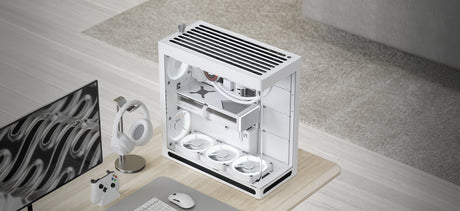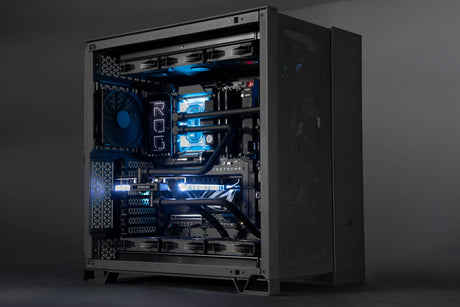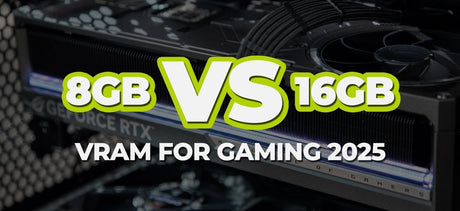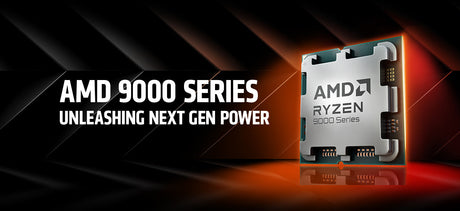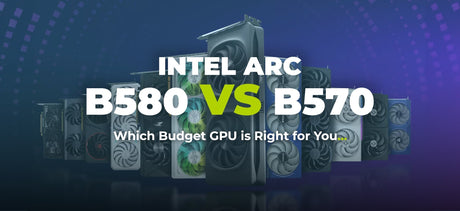AMD Radeon RX 9000 Series: Everything We Know So Far
AMD’s highly anticipated Radeon RX 9000 Series GPUs, including the AMD Radeon RX 9070 and AMD Radeon RX 9070 XT, are built on the new RDNA 4 architecture and promise significant advancements in gaming performance, AI processing, and ray tracing. While official details are still limited, leaks, insider insights, and AMD’s own teasers provide glimpses into what these next-gen GPUs might offer in terms of architecture, memory, power efficiency, and release schedules.

Please note that all information presented here is based on available leaks, industry speculation, and early reports. While we’re using AMD’s confirmed naming structure, details may change as more information becomes available. We’ll keep this blog updated with the latest news, so be sure to check back for updates!
A New Naming Convention
AMD is shaking things up with a new naming structure. Instead of using the hundreds digit to differentiate models (e.g., RX 7900 XT vs. RX 7800 XT), AMD now uses the tens digit, a move that aligns more closely with NVIDIA’s approach. This change should make it easier to compare models and understand performance tiers at a glance.

RDNA 4 Architecture: What’s New?
The RDNA 4 architecture is built on a refined 4nm process, bringing significant upgrades across the board:
- Optimized Compute Units – Higher instructions per clock and increased clock speeds for improved efficiency.
- Enhanced AI Processing – Second-gen AI accelerators will boost AI-driven applications and in-game upscaling.
- Advanced Ray Tracing – Third-gen ray-tracing accelerators aim for smoother, more realistic lighting.
- Improved Media Encoding – Better video encoding performance for streamers and content creators.

While RDNA 4 isn’t focused on ultra-high-end GPUs like the 7900 XTX, it’s expected to compete in the performance-mainstream market, targeting value-oriented gamers.
AI-Powered FidelityFX Super Resolution 4 (FSR 4)
AMD is also rolling out FidelityFX Super Resolution 4 (FSR 4), its next-gen upscaling technology designed to compete with NVIDIA’s DLSS 3.5.
- Powered by AI accelerators for better image reconstruction.
- Currently only available on 9000 Series.
- FSR 4 may be a simple upgrade for FSR 3.1 Games.
FSR 4 could be a game-changer, offering higher frame rates without sacrificing visual quality, especially for 1440p and 4K gaming.
Anticipated Performance and Market Positioning
While AMD hasn’t released official benchmarks, the RX 9070 XT and RX 9070 are positioned to compete with NVIDIA’s RTX 4070 Ti and RTX 4070 Super. This suggests that:
- RX 9070 XT could offer performance close to an RTX 4080 but at a lower price point.
- RX 9070 will likely aim for high-end 1440p gaming, possibly outperforming the RTX 4070.
AMD is focusing on strong ray tracing, AI capabilities, and competitive pricing to win over gamers looking for next-gen performance without the ultra-premium price tag.
Final Thoughts: Should You Wait for RX 9000?
AMD’s RDNA 4 launch is shaping up to be a major step forward, especially for gamers and creators who want AI-powered enhancements without breaking the bank. With FSR 4, improved ray tracing, and better efficiency, the RX 9070 XT and RX 9070 could be the best options for 1440p and 4K gaming at mainstream prices. While there is no specific release date yet, rumors are pointing to sometime end of Q1 25. We’ll update this article as more details emerge, so stay tuned for official benchmarks and pricing.
Building a PC? Visit Computer Lounge!
If you're planning to upgrade your gaming rig, check out Computer Lounge for the latest GPUs, custom PC builds, and expert advice to get the most out of your hardware.

